Reusable beeswax food wraps are an eco-friendly alternative to plastic wrap that lasts for months and even years when maintained properly!
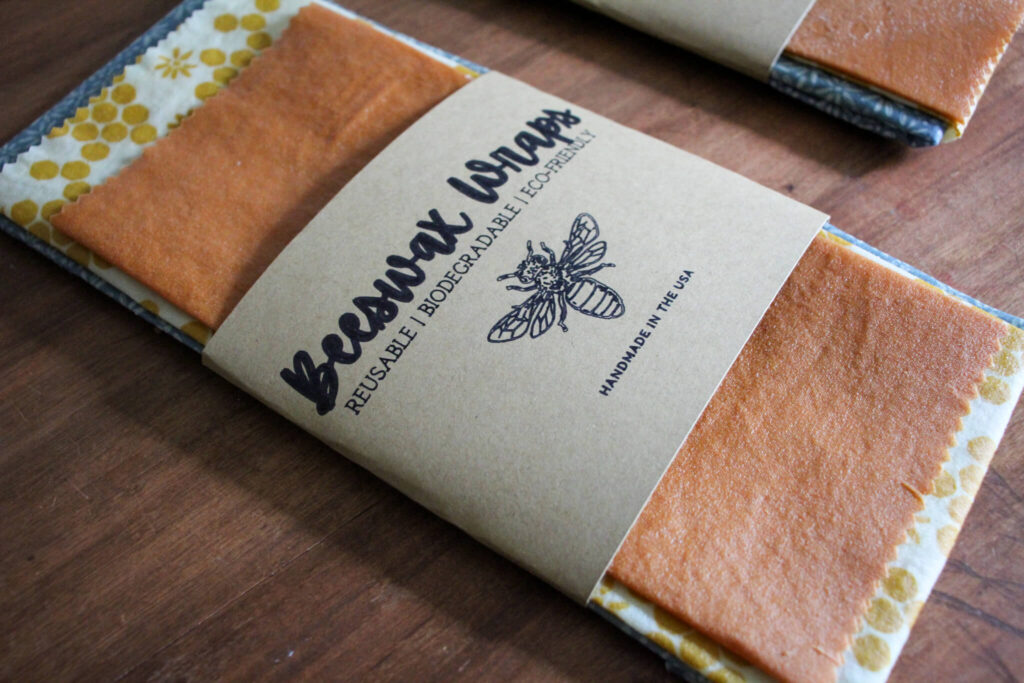
Over the last few years, one of my goals has been to use eco-friendly products in my kitchen and to reduce my plastic use. While I’m not perfect and I use my fair share of plastic baggies, I find that using reusable items like reusable bowl covers, bread bags and beeswax wraps have been a game changer. They’re great for wrapping up foods like leftover cheese and produce, as well as homemade baked goods. One of my favorite ways to use beeswax wraps is to keep my homemade bread fresher longer! It makes a significant difference in the longevity of it and that’s a huge win for me. If you’re looking for a way to reduce plastic use in your kitchen, these wraps are the way to go!
PIN FOR LATER!
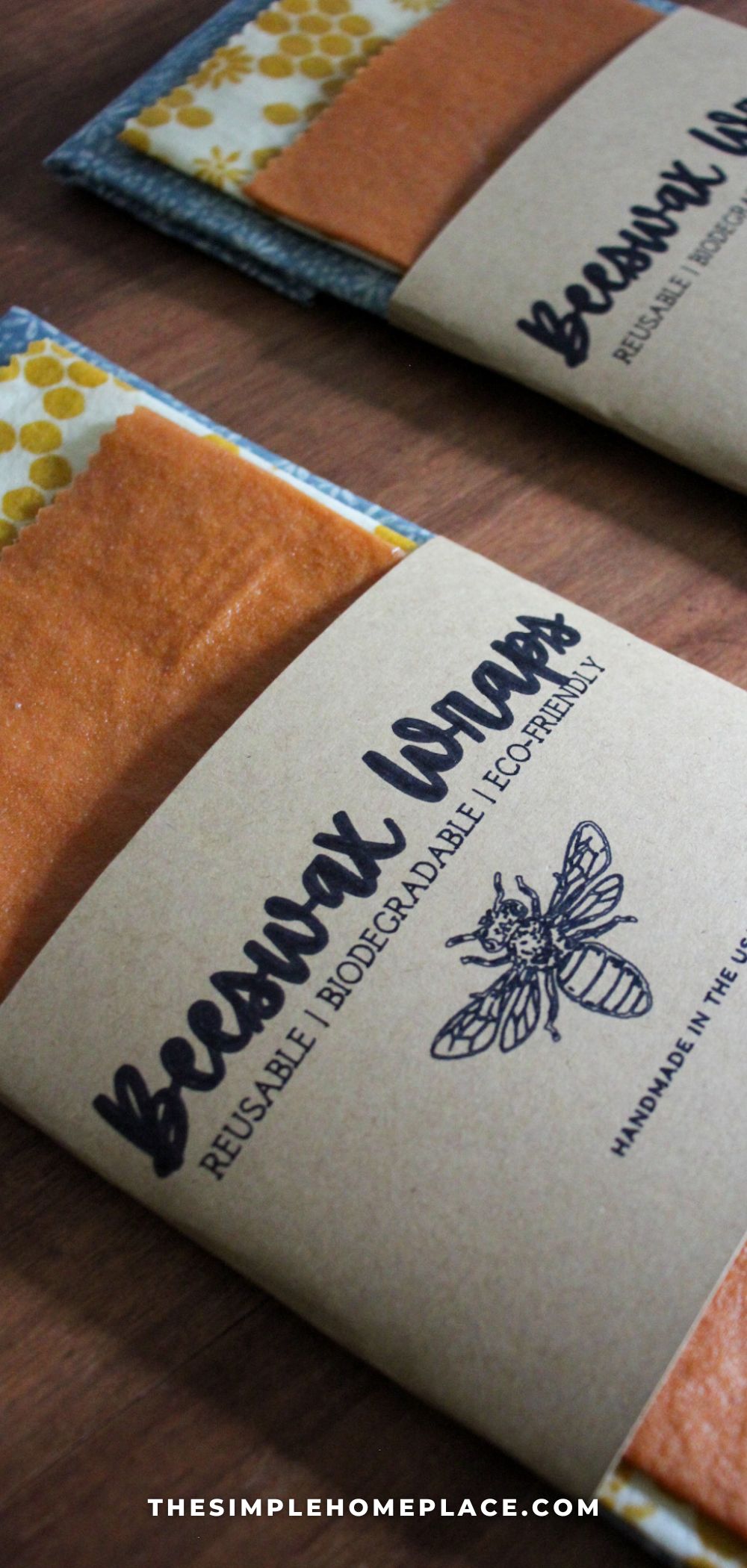
VIDEO TUTORIAL
COMMON QUESTIONS ABOUT BEESWAX WRAPS
What are beeswax food wraps?
Beeswax food wraps are a piece of material, usually cotton, that has been coated in a sticky, breathable and waterproof coating that includes beeswax and often pine resin and jojoba oil. These wraps are used to preserve food and keep it fresher longer. Beeswax wraps can be used on cheeses, produce, baked goods and to cover containers like bowls.
What are the pros and cons of using beeswax wraps?
Pros:
- They can be used for years with routine maintenance.
- They’re breathable and antibacterial, which helps keep food fresher, longer.
- Beeswax wraps can be composted at the end of their use.
- They are moldable and can form to any object easily.
- A great alternative to plastic wrap.
- Beeswax wraps are really easy to care for, just hand wash and hang dry.
Cons:
- Beeswax wraps cannot be used with raw meat because of potential contamination.
- You should not use your wrap with hot foods because it can melt the coating.
- They cannot be washed in the washing machine or dishwasher and have to be hand washed.
- Food wraps can leave a residue on your bowls and containers.
- You should not use them in the freezer.
- Beeswax wraps can be expensive to buy or make.
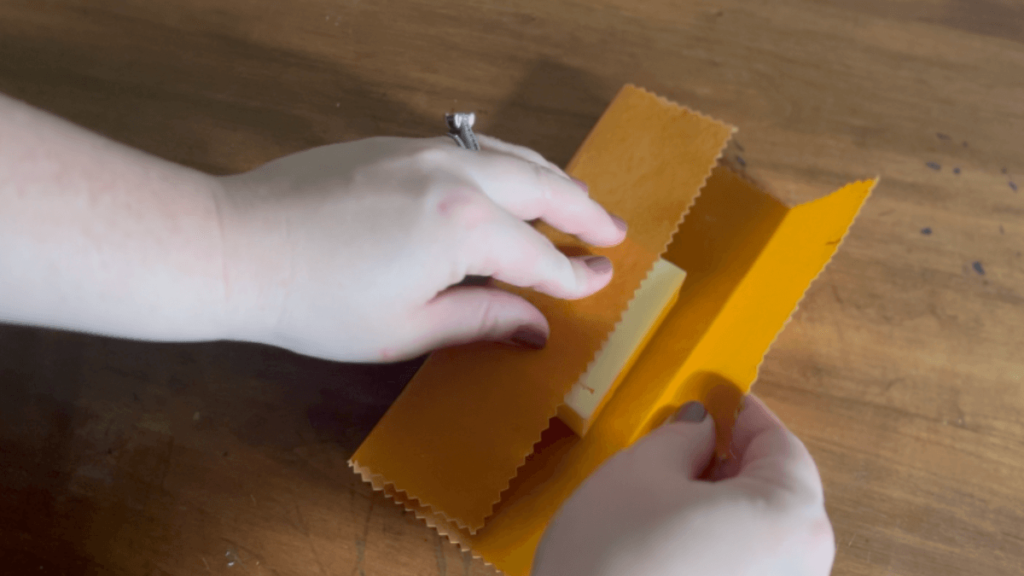
What size should I make my food wraps?
The great thing about making your own food wraps is that you can customize them to work well in your kitchen. If your goal is to cover half an apple or a small piece of cucumber, you’ll probably want to opt for a smaller size. If you plan to cover loaves of bread or a large casserole dish, then you’ll want to make them larger. Here is a great guide that can help you determine what size to make your food wraps.
Here’s what I made for my kitchen:
- 9 x 9: great for wrapping small items, including a mason jar
- 11 x 11: perfect for cheese and pieces of fruits and veggies
- 15 x 15: used to wrap large mixing bowls
- 17 x 22.5: wraps a loaf of homemade bread
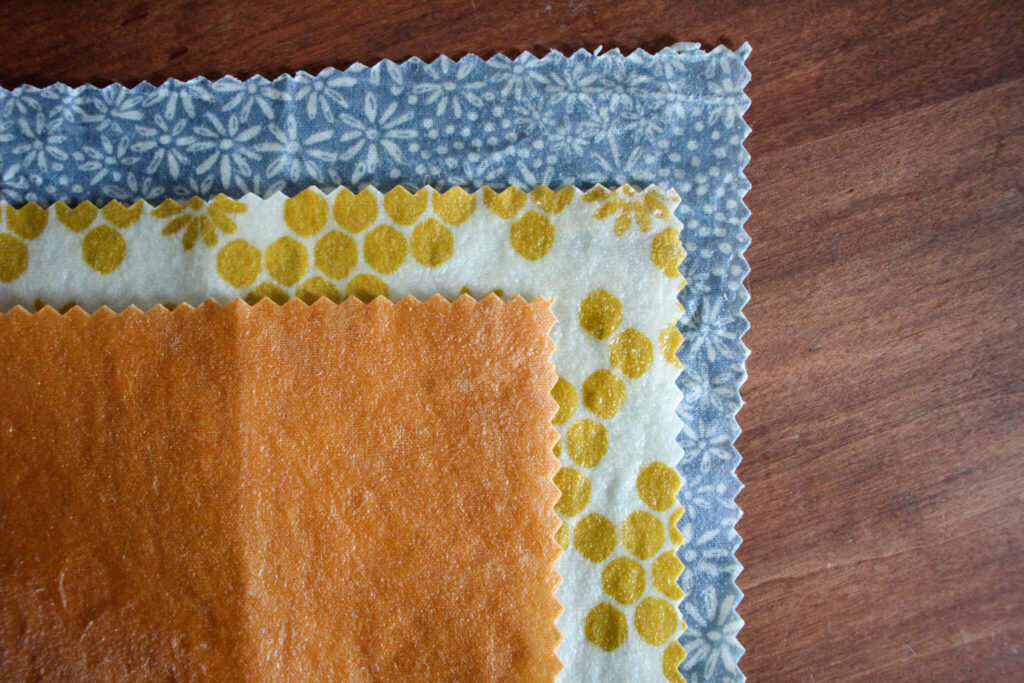
Ingredients for Making Beeswax Wraps
Beeswax: Beeswax is great to use for DIY food wraps because it’s antibacterial, and when added to fabric, creates a breathable, waterproof surface.
Jojoba Oil: Jojoba oil in food wraps creates more flexibility in the fabric, which will help you wrap your desired food item more easily.
Pine Resin: Adding pine resin to DIY food wraps adds extra stickiness that allows the wrap to stick well to containers, as well as itself when wrapping food like cheese and vegetables.
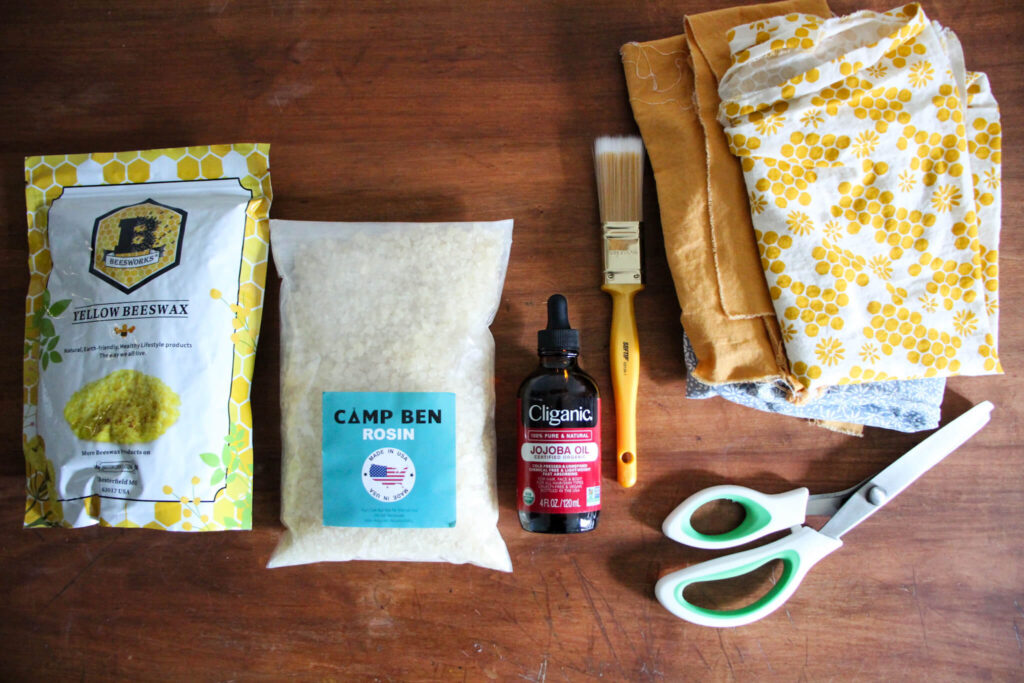
How to Make Reusable Beeswax Food Wraps
The following may contain affiliate links, which means I may receive a commission, at no extra cost to you, if you make a purchase through a link. Please see our full disclosure here for further information.
How to Make Reusable Beeswax Wraps with Only Beeswax
TOOLS YOU MAY NEED
- Iron
- Old towel
- Parchment paper
- Pinking scissors (optional)
MATERIALS YOU MAY NEED
- 1/2 yard cotton fabric
- 1-2 tbs beeswax pellets (adjust up for bigger pieces of fabric)
- 1 tsp Jojoba oil
DIRECTIONS
Wash and dry your cotton fabric, then preheat an iron to the hottest setting, usually the cotton setting and iron the fabric.
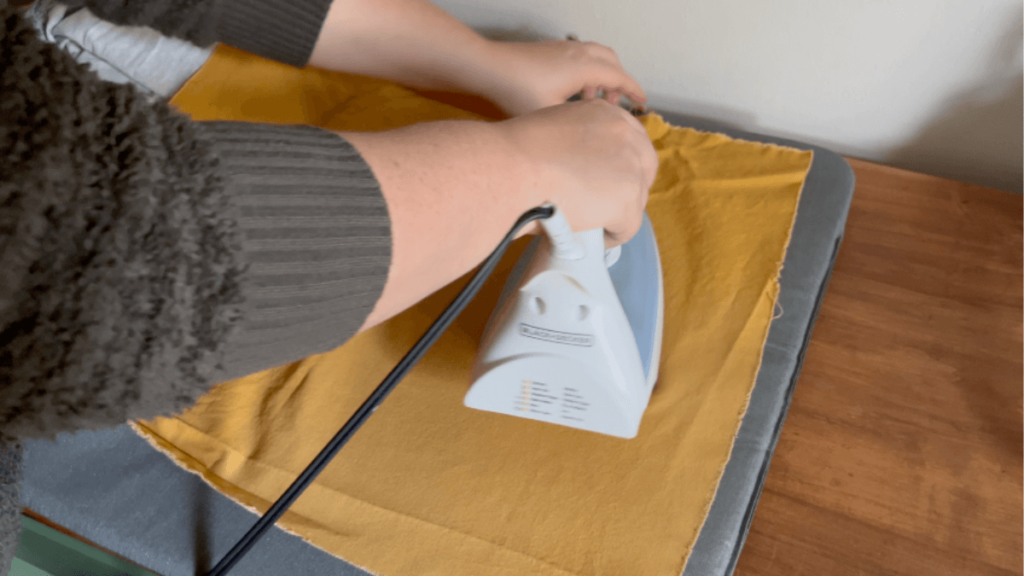
Cut the fabric to desired size.
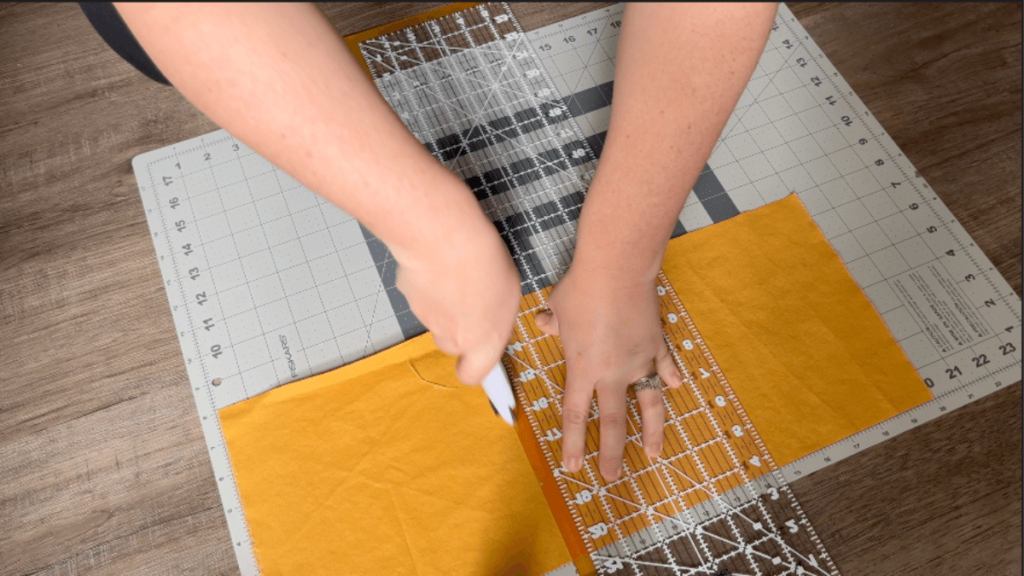
Lay a folded towel on a flat surface, then a piece of parchment paper over top and sprinkle 1-2 tbs of beeswax and 1 tsp jojoba oil (optional) onto the fabric.
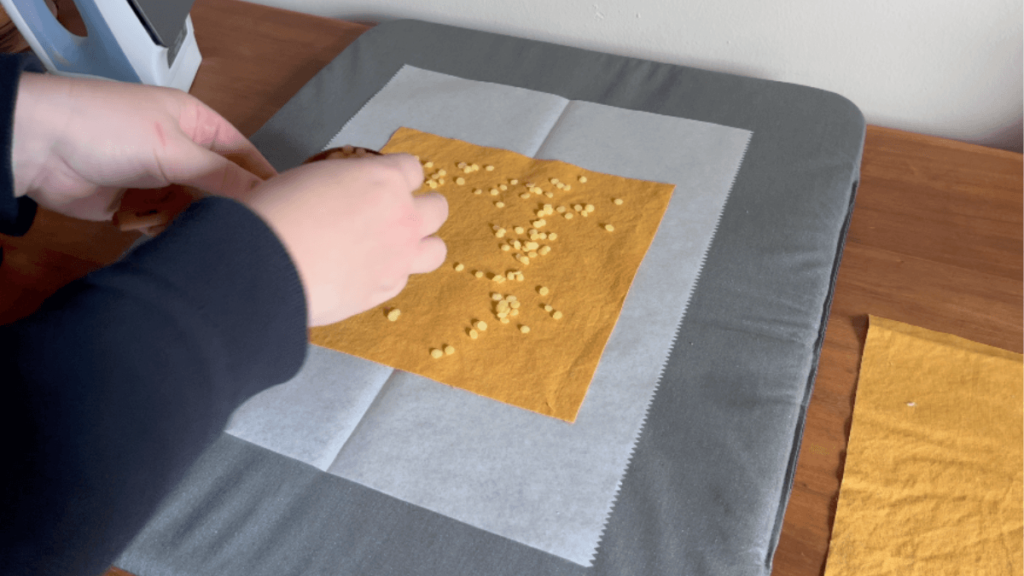
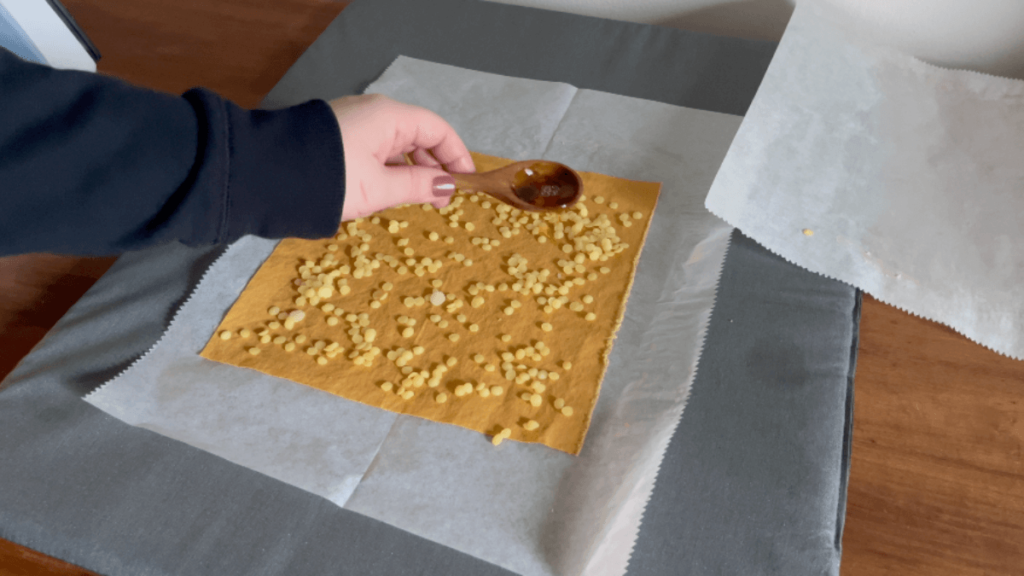
Add another piece of parchment paper on top of the fabric, then press the iron on top of the parchment paper for 5-10 seconds to melt the beeswax, then move to another spot on the fabric. Repeat until all the beeswax is melted and the entire sheet of fabric is covered in beeswax.
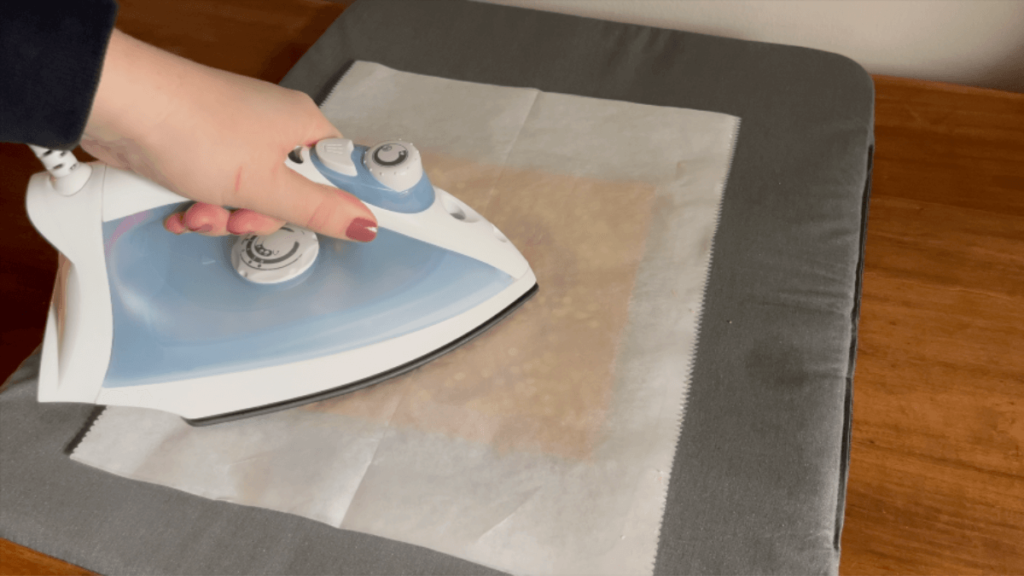
Carefully remove the top piece of parchment paper and peel the fabric from the bottom piece of parchment paper.
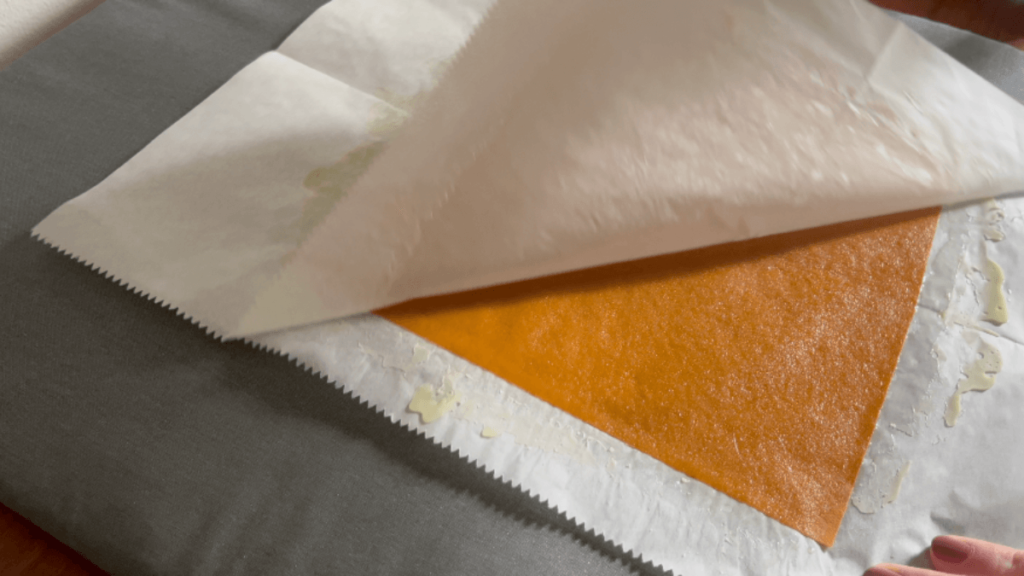
Wave the fabric back and forth for 10-15 seconds until the beeswax has cooled completely, then use pinking shears (optional) to cut around the edges to prevent the fabric from fraying. Then it’s ready for use!
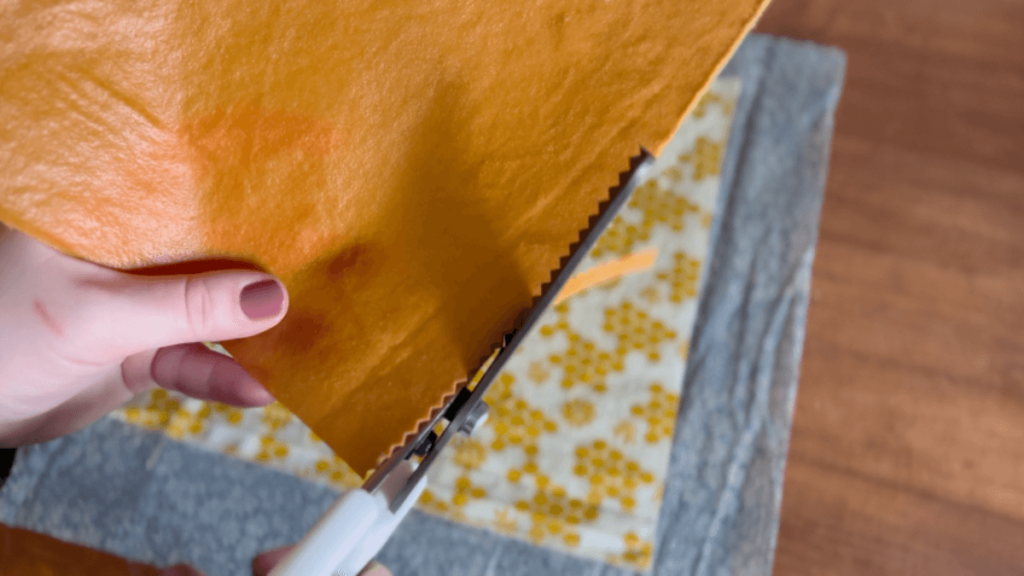
Notes
- Add more beeswax if needed, but be careful not to oversaturate the fabric.
- If you notice your wrap loses its stickiness, simply add more beeswax pellets and repeat the process laid out above.
- Properly cared for, these wraps can last for years, but without maintenance should last 6-12 months.
- You can use white beeswax pellets if you’re worried about discoloration of your fabric.
- Many people use organic cotton fabric for beeswax wraps, but you can use any cotton or linen fabric.
How to Make Beeswax Wraps
Equipment
- Iron
- Old towel
- Parchment paper
- Pinking shears
Materials
- 1/2 yard cotton fabric
- 1-2 tbs beeswax pellets adjust up for bigger pieces of fabric
- 1 tsp Jojoba oil
Instructions
- Wash and dry your cotton fabric, then preheat an iron to the hottest setting, usually the cotton setting and iron the fabric.
- Cut the fabric to desired size.
- Lay a folded towel on a flat surface, then a piece of parchment paper over top and sprinkle 1-2 tbs of beeswax and 1 tsp jojoba oil (optional) onto the fabric.
- Add another piece of parchment paper on top of the fabric, then press the iron on top of the parchment paper for 5-10 seconds to melt the beeswax, then move to another spot on the fabric. Repeat until all the beeswax is melted and the entire sheet of fabric is covered in beeswax.
- Carefully remove the top piece of parchment paper and peel the fabric from the bottom piece of parchment paper.
- Wave the fabric back and forth for 10-15 seconds until the beeswax has cooled completely, then use pinking shears (optional) to cut around the edges to prevent the fabric from fraying. Then it’s ready for use!
Notes
- Add more beeswax if needed, but be careful not to oversaturate the fabric.
- If you notice your wrap loses its stickiness, simply add more beeswax pellets and repeat the process laid out above.
- Properly cared for, these wraps can last for years, but without maintenance should last 6-12 months.
- You can use white beeswax pellets if you’re worried about discoloration of your fabric.
- Many people use organic cotton fabric for beeswax wraps, but you can use any cotton or linen fabric.
How to Make Reusable Beeswax Wraps with Pine Resin
TOOLS YOU MAY NEED
- Heat safe bowl or mason jar and sauce pot
- Large baking sheet
- Parchment paper or aluminum foil
- Paint brush
- Pinking scissors (optional)
- Clothes pins (optional)
MATERIALS YOU MAY NEED
- 1/2 yard cotton fabric
- 1/2 cup beeswax pellets (2.5 oz)
- 3 tbs pine resin (0.8 oz)
- 2 tsp Jojoba oil (0.2 oz)
DIRECTIONS
Wash and dry your cotton fabric, then iron if necessary.
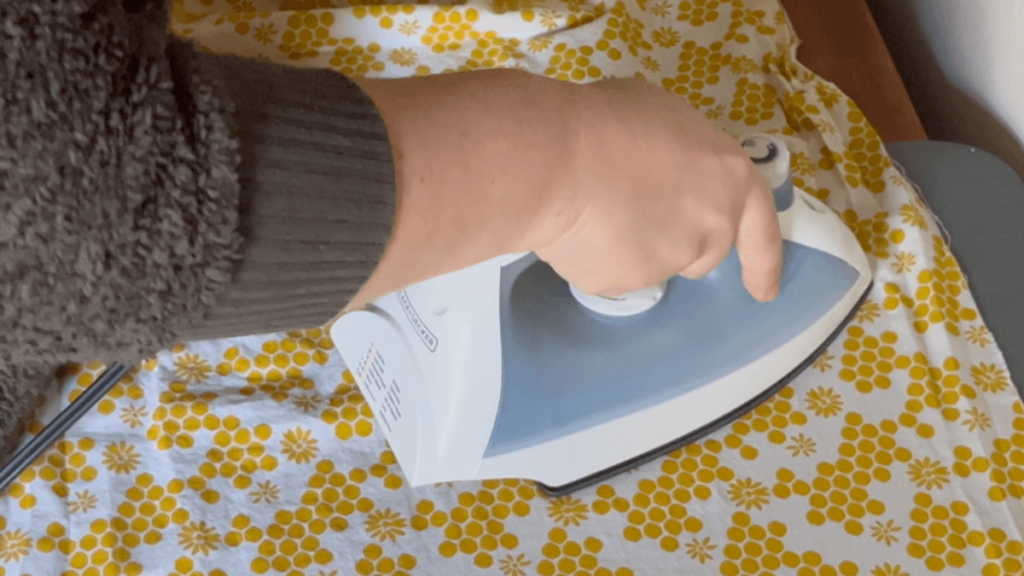
Cut the fabric to size.
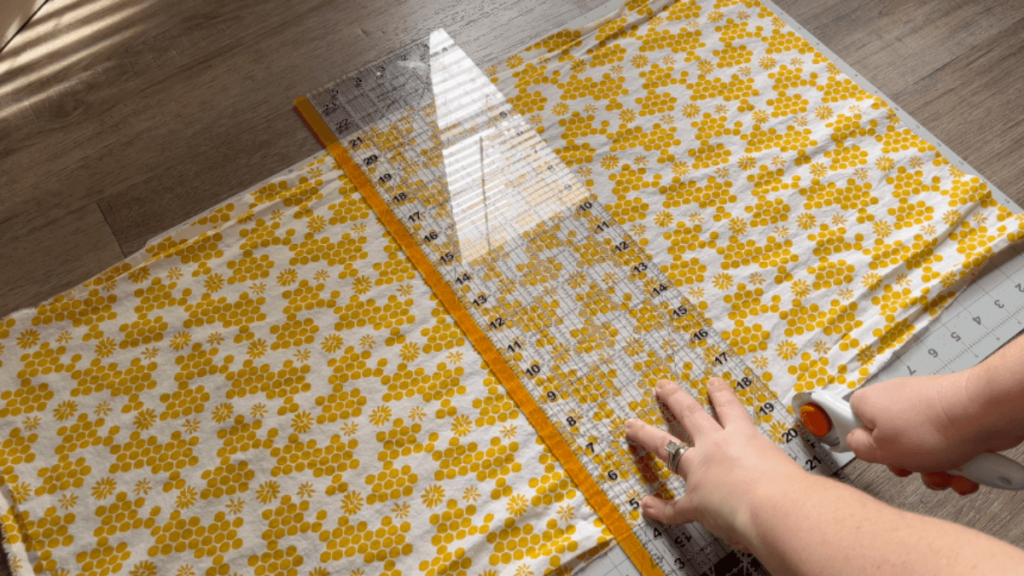
In a pint sized mason jar or heat safe bowl, add the beeswax pellets, pine resin and jojoba oil, then place the jar in a pot with enough water to go above the top of the ingredients in the jar. Turn the stove to medium high heat and allow the ingredients to fully melt, about 30-40 minutes. You may need to add a washcloth to the bottom of the pot to ensure the glass doesn’t break.
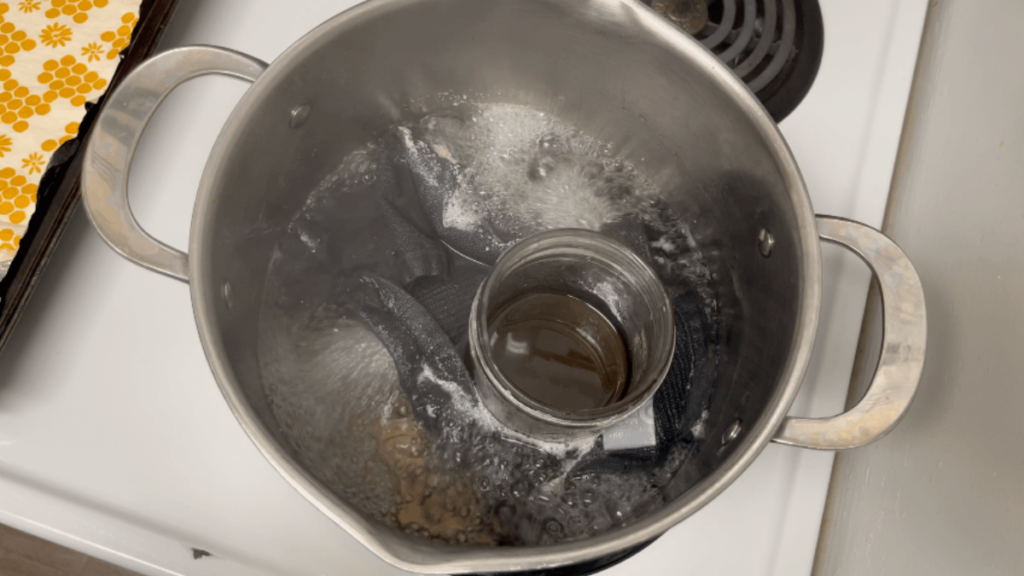
In the meantime, cover a large baking sheet in aluminum foil or parchment paper and lay one cut piece of fabric on top and pre-heat the oven to 200°F.
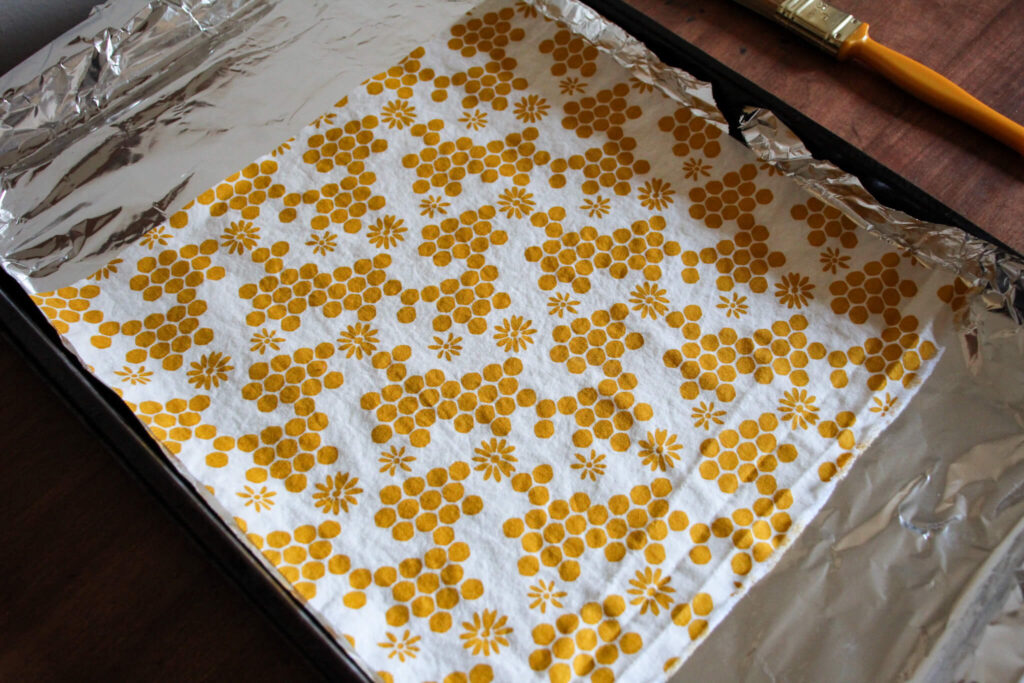
Once all the ingredients are fully melted, dip a clean paintbrush into the mixture and paint it evenly onto the fabric, making sure there are no dry spots.
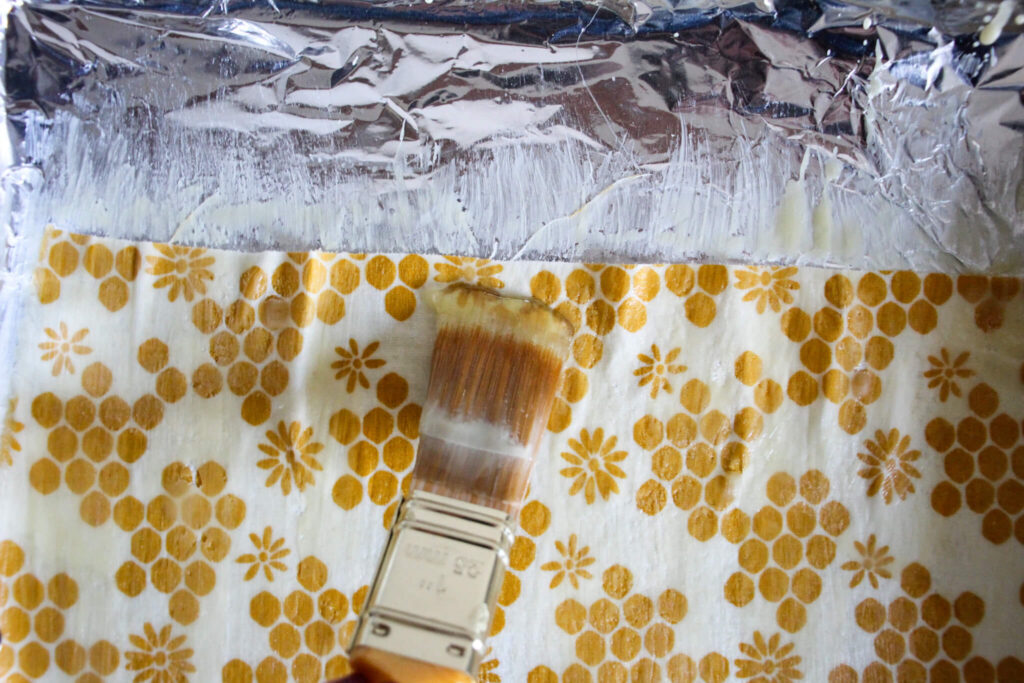
Place the sheet pan into the oven for 5 minutes, pull it out to make sure the fabric is evenly coated, including the backside, then carefully lift it up and wave it in the air for 10-15 seconds to allow the beeswax to cool slightly.
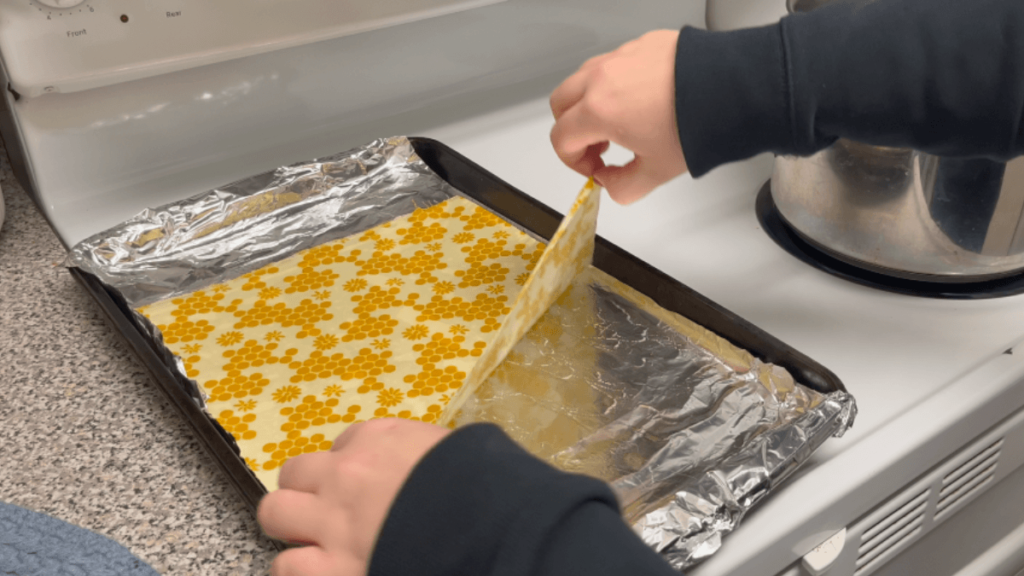
Hang the beeswax wrap on a line or by draping it over a hanger and allow it to cool overnight.
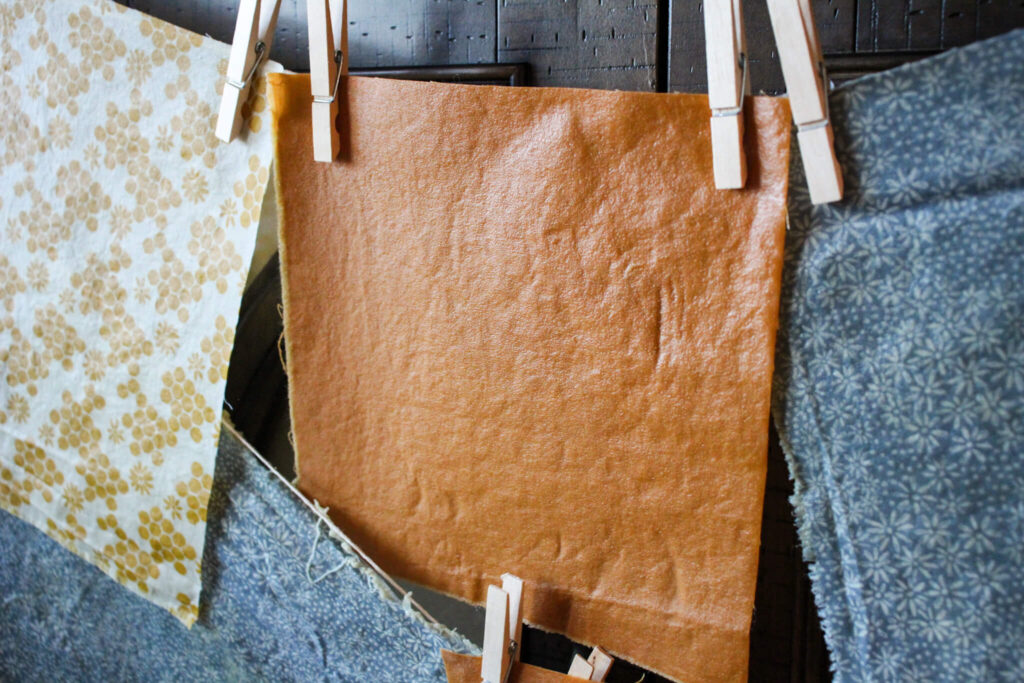
Use pinking shears (optional) to trim around the edges to prevent the fabric from fraying, then it’s ready for use.
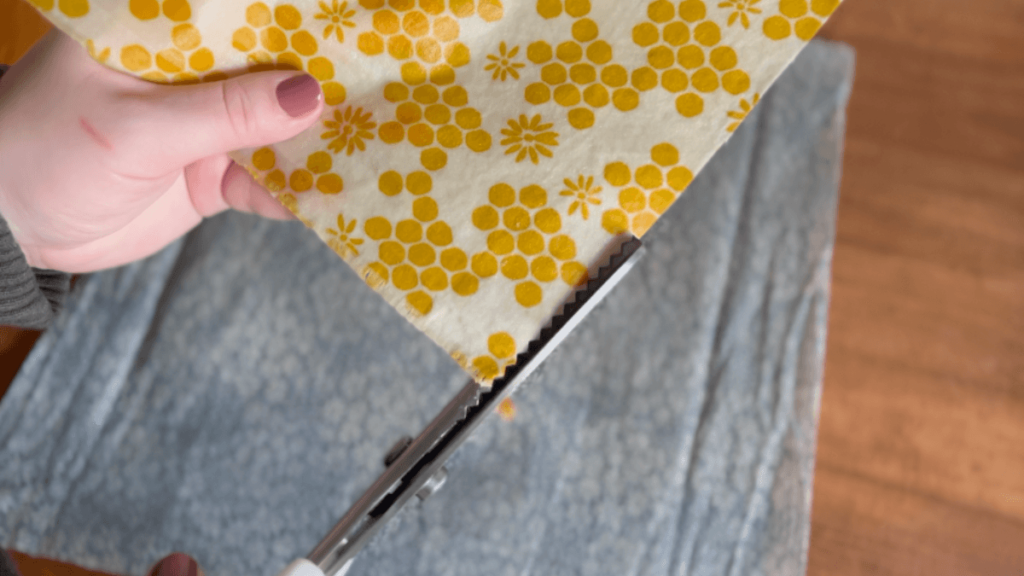
Notes
- I recommend keeping the jar in the boiling water to keep the mixture fully melted, as it cools quickly, but you could also place it on a wax warmer.
- It’s advised not to melt beeswax over an open flame as it’s highly, flammable. If you have a gas stove, it’s recommended to use the double boiler method.
- Ensure the wraps are fully dry before use.
- If you find buying all the ingredients too expensive, try buying a beeswax wrap kit instead.
How to Make Beeswax Wraps with Pine Resin
Equipment
- Heat safe bowl or mason jar and sauce pot
- Large baking sheet
- Parchment paper or aluminum foil
- Paint brush
- Pinking shears optional
- Clothes pins
Materials
- 1/2 yard cotton fabric
- 1/2 cup beeswax pellets 2.5 oz
- 3 tbs pine resin 0.8 oz
- 2 tsp Jojoba oil 0.2 oz
Instructions
- Wash and dry your cotton fabric, then iron if necessary.
- Cut the fabric to size.
- In a pint sized mason jar or heat safe bowl, add the beeswax pellets, pine resin and jojoba oil, then place the jar in a pot with enough water to go above the top of the ingredients in the jar. Turn the stove to medium high heat and allow the ingredients to fully melt, about 30-40 minutes. You may need to add a washcloth to the bottom of the pot to ensure the glass doesn’t break.
- In the meantime, cover a large baking sheet in aluminum foil or parchment paper and lay one cut piece of fabric on top and pre-heat the oven to 200°F.
- Once all the ingredients are fully melted, dip a clean paintbrush into the mixture and paint it evenly onto the fabric, making sure there are no dry spots.
- Place the sheet pan into the oven for 5 minutes, pull it out to make sure the fabric is evenly coated, including the backside, then carefully lift it up and wave it in the air for 10-15 seconds to allow the beeswax to cool slightly.
- Hang the beeswax wrap on a line or by draping it over a hanger and allow it to cool overnight.
- Use pinking shears (optional) to trim around the edges to prevent the fabric from fraying, then it’s ready for use.
Notes
- I recommend keeping the jar in the boiling water to keep the mixture fully melted, as it cools quickly, but you could also place it on a wax warmer.
- It’s advised not to melt beeswax over an open flame as it’s highly, flammable. If you have a gas stove, it’s recommended to use the double broiler method.
- Ensure the wraps are fully dry before use.
- If you find buying all the ingredients too expensive, try buying a beeswax wrap kit instead.
How to Use DIY Beeswax Wraps
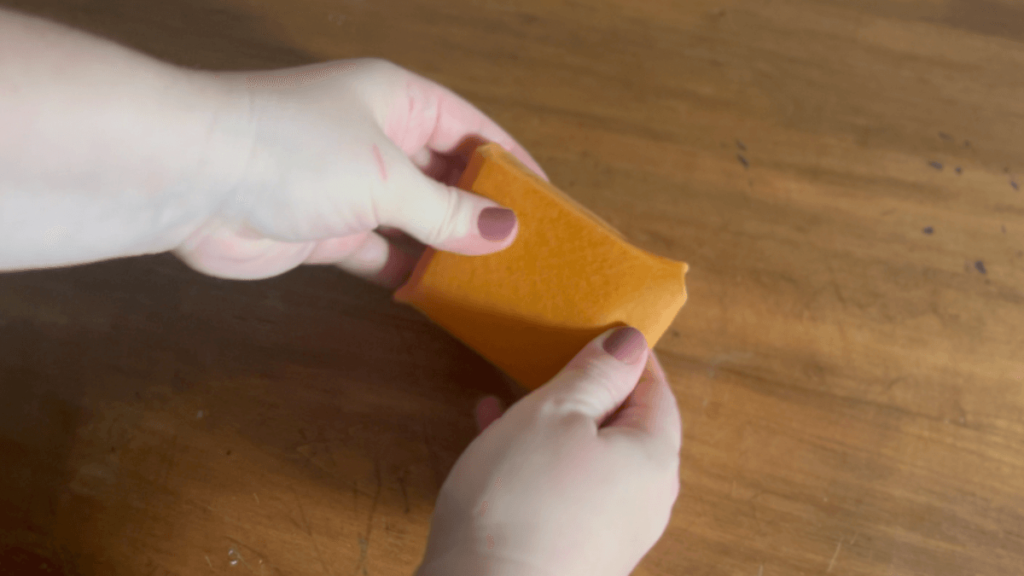
First, allow food to cool completely before wrapping. To wrap food items such as cheese, veggies or bread, lay the beeswax wrap on a flat surface. Place the food in the middle and begin folding the sides up and around the food, molding it to fit nicely around. I even like to wrap cheese up like a little present!
To use these beeswax wraps as bowl covers, simply place the wrap on top of the bowl and apply firm pressure all around the edge and sides of the bowl. The heat of your hands will help the wrap stick nicely.
Do not use these wraps with any kind of meat, raw or cooked, because they can become contaminated. These can be used in the refrigerator, but it’s advised not to use them in the freezer as they can crack over time. Additionally, it’s best to store your DIY food wrap in a cool place away from the sun to keep the wax from melting.
How to Care for DIY Beeswax Wraps
Clean your beeswax wrap with cold water and a mild soap, like Castile soap, then rinse the wrap thoroughly and allow it to air dry. Once dry, it’s time to be used again or stored for later use!
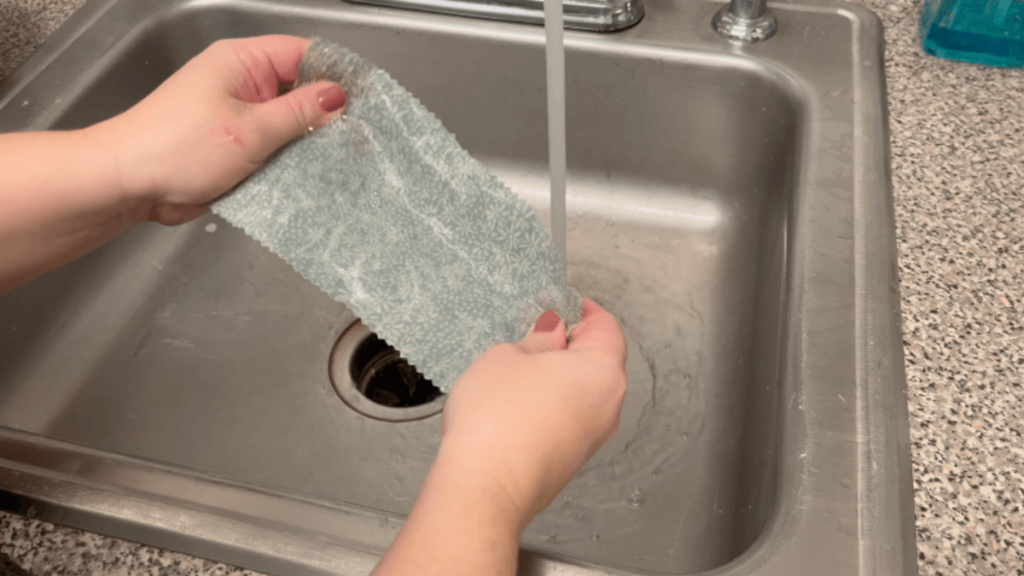
To store beeswax wraps, ensure they are fully dry and leave them in a cool dry place away from the sun to prevent the beeswax from melting.
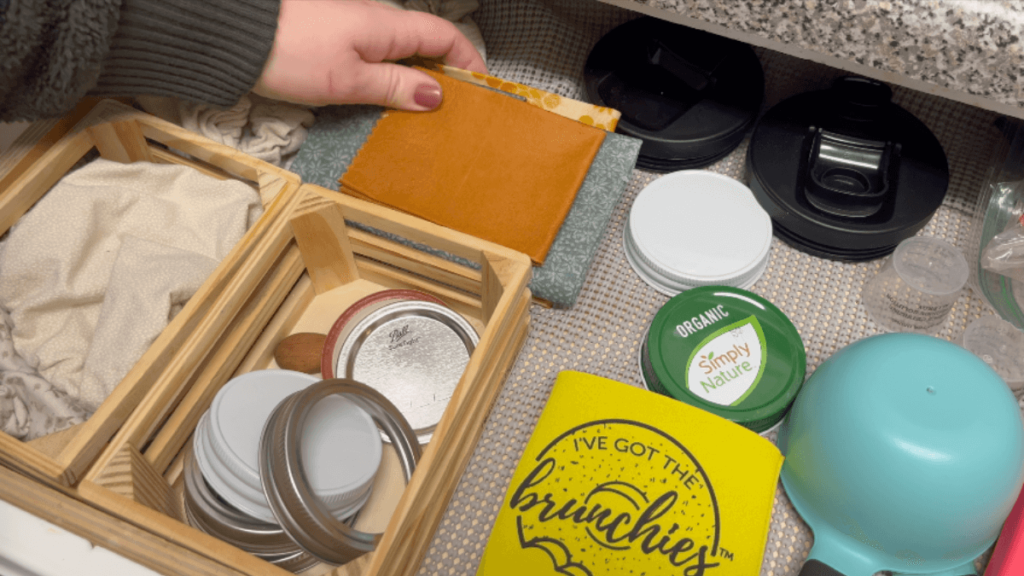
LOOK FOR MORE ECO-FRIENDLY PROJECTS?
- How to Make a Reusable DIY Bread Bag
- How to Sew Reusable Bowl Covers
- How to Make a Homemade Reusable Heating Pad
Did you make these reusable beeswax food wraps? If you did, I’d love to see how they turned out! Tag me on Instagram @thesimplehomeplace to show me your own recreations of these beeswax wraps!







Can you use any other oil? Jojoba is one I don’t have. I have coconut, almond, olive?
You can use other oils, but you want to use one that has a longer shelf life, otherwise you risk the oil going rancid and ruining your wrap. I would not use almond as it has a shelf life under one year and olive oil has a shelf life of 12-18 months. Coconut oil is your best bet, but honestly you can skip the oil portion all together. Your wraps may be a bit stiffer, but they’ll still work just fine without it. Hope that helps!
Just an FYI-it’s double boiler, not broiler. 😉
Haha oh my gosh, thank you! Changing that now!